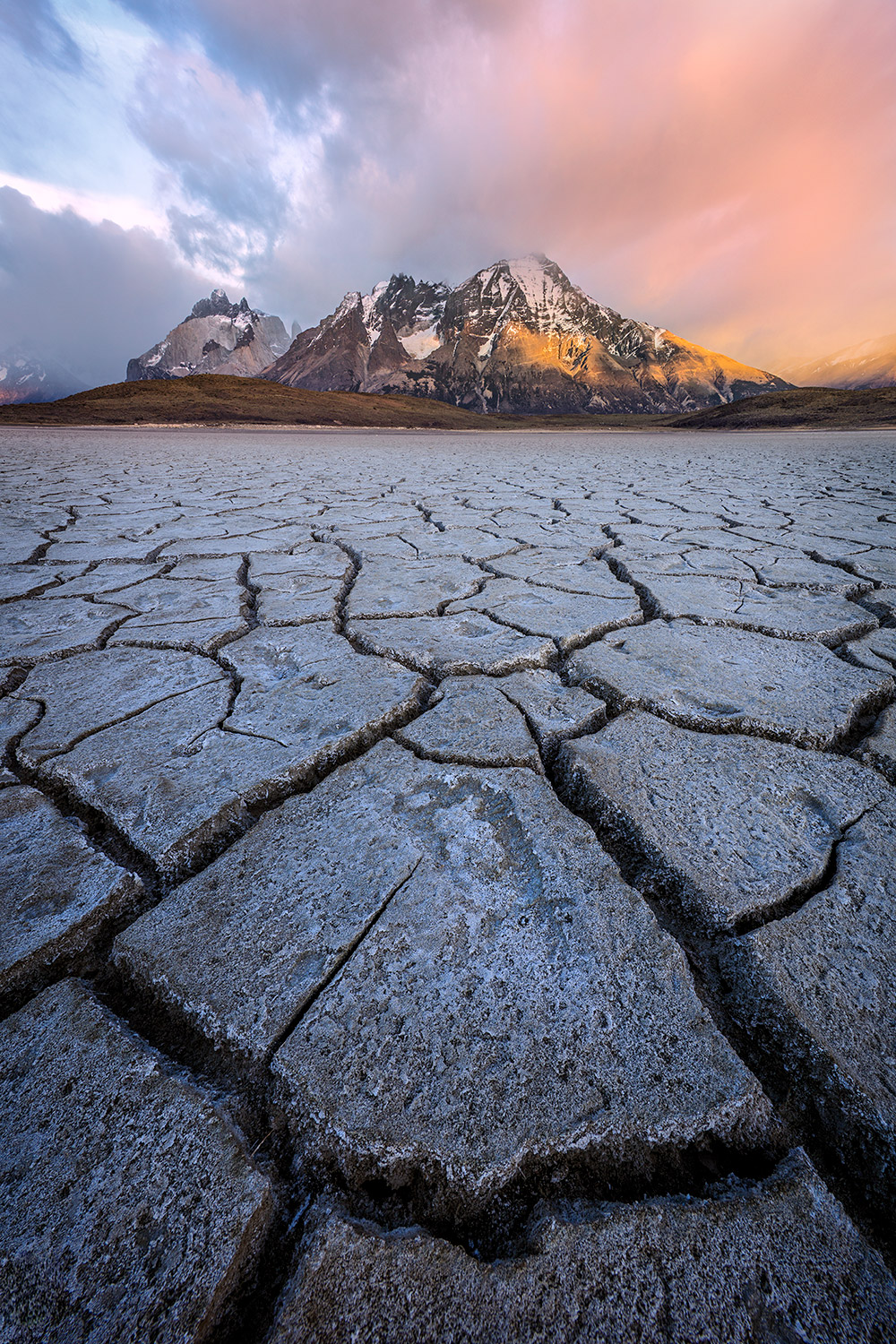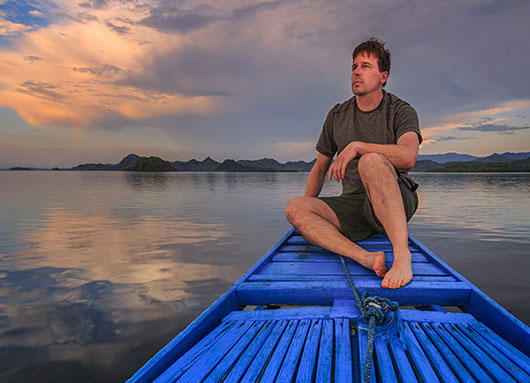 During my more than ten years as a professional photographer, I’ve learned a lot about the ins and outs of domestic and international travel. Luckily, you can benefit from my hard-won experience and avoid some of the travel pitfalls that I have encountered. This is the first installment in a two-part article with a few of my top tips for making your travel experience easier. This first article focuses on flying with photo equipment.
During my more than ten years as a professional photographer, I’ve learned a lot about the ins and outs of domestic and international travel. Luckily, you can benefit from my hard-won experience and avoid some of the travel pitfalls that I have encountered. This is the first installment in a two-part article with a few of my top tips for making your travel experience easier. This first article focuses on flying with photo equipment.
Related article: Things to Consider When Traveling Internationally for Photography
Torres del Paine National Park, Chile. Canon 5DSR, Canon 11-24mm f/4 lens, ISO 100, f/11, 1/13 second, focus stack blend for enhanced depth of field.Pack your expensive camera equipment in your carry-on bag.
Most airlines won’t insure the value of your ridiculously expensive photo gear if you check you photo bag, and many airports around the world have problems with pilferage, so bringing your camera gear on board with you is the only way to go (or most of it, at least; see below for some important exceptions). It seems, however, that every year carry-on restrictions get increasingly draconian. Most major US airlines allow 40 pounds or even more for carry-on bags, but you might run into problems with overseas carriers, smaller planes, and crowded flights. For example, when flying in a small bush plane, stowing your camera bag in the cargo hold is probably unavoidable, but luckily the risk of theft is greatly reduced when working with a small air carrier with only a few employees.So, I always try to pack as light as I can when I travel (see, for example, this short video of me packing my carry-on for an international landscape and wildlife photo trip). That said, I almost never have a problem when I carry a photo backpack, as opposed to a rolling bag: if an airline is weighing carry-on bags, or asking people to check carry-ons because the plane is full, they usually don’t bother people with backpacks (unless they are conspicuously huge-looking).
Related video: Selecting the Best Camera Bags for Outdoor Photography
Also, remember that most airlines allow you to bring a second, smaller bag on as well, such as a purse or a computer bag. Just make sure that your second bag is big enough to take a few extra items if you need to lighten the load of your primary carry-on. The secondary bag goes under your feet, so most airlines won’t care if you stuff some heavy equipment in there (usually, the weight restrictions are only for the overhead bins).
I also know some people who wear a photo vest, stuffing a few items in their pockets to avoid weight restrictions. Since airlines advise you not to pack expensive items in your checked luggage, if airline employees tell you that your bag is too heavy, show them what you are carrying, and they will usually try to accommodate you.
Arctic National Wildlife Refuge, USA. Canon 1DXII, Canon 200-400mm f/4 lens with built-in 1.4x extender, ISO 2000, f/5.6, 1/800 second.Check your tripod.
TSA guidelines are clear that you can bring tripods on board, and most airports around the world have rules similar to the TSA’s guidelines. But not every airport security official knows or cares about the rules, and I’ve seen some photographers get told by security to go back to the airline counter and check their tripod (because it is “club-like” and can be used as a weapon). That said, unless I am traveling very light, I usually pack my tripod within my checked luggage, as well as some heavy accessories such as flash and bulky battery chargers; these items are much less likely to be targeted by thieves than cameras or lenses, and can add a lot of weight to your carry-on.Make sure to pack spare lithium ion batteries in your carry-on.
Batteries installed in devices can be packed in checked luggage, but you must carry spare camera batteries in your carry-on bags. According to the TSA, if you’re traveling with spare batteries in addition to the ones inside your devices, consider placing each battery in its own protective case, plastic bag, or package, or place tape across the battery’s contacts to isolate terminals (this prevents hazards due to short-circuiting). If you must carry a battery-powered device in any baggage, package it so it won’t accidentally turn on during the flight. For more information about TSA regulations regarding batteries, visit the TSA blog.Related video: Everyday Items that Belong in Your Camera Bag
Pack as light as you can.
I always do my best to keep my carry-on and checked luggage as light as possible, as it helps avoid weight restrictions, and nothing is worse than having to lug heavy bags around the airport and elsewhere during an extended photo trip. Spare clothing is by far the worse culprit, taking up a lot of space in your luggage and getting very heavy if you bring too much, so I always bring as little of it as I can.When traveling, I do laundry A LOT, either using laundry services at hotels if available or hand-washing clothes on a regular basis. A neat option for easily doing your own laundry is an accessory known as The Scrubba, which is probably best described as a laundry machine in a bag. I know one photographer who travels with The Scrubba, and he claims to only carry one extra set of clothing with him, swapping and washing his unused clothing every night. Now that’s traveling light!
Virunga National Park, Congo. Canon 5DIII, Canon 24-70mm f/2.8 lens, ISO 800, f/5.6, 1/200 second.Conclusion
Travel can be difficult for photographers, but with a little bit of planning, you can usually avoid the worst of it. I’m interested in hearing about your experiences when traveling for photo trips, whether domestic or abroad—let’s hear your stories: the good, the bad, and especially the ugly!If you haven’t yet already, make sure to check out Part Two of this series: Things to Consider When Traveling Internationally for Photography
About the author: Whether hanging over the rim of an active volcano, braving the elements to photograph critically-endangered species, or trekking deep into the wilderness to places most people will never see, world-renowned professional photographer Ian Plant travels the globe seeking out amazing places and subjects in his never-ending quest to capture the beauty of our world with his camera. Ian is a frequent contributor to many leading photo magazines, Managing Editor of Outdoor Photography Guide, a Tamron Image Master, and the author of numerous books and instructional videos. Known for his inspiring images and single-minded dedication to creating the perfect photo, Ian has reached hundreds of thousands of people around the world in his mission to inspire and educate others in the art of photography. You can see more of his work at www.ianplant.com.




Thank you, going to France in May with my son to visit the D-day sites and your article was very informant on my camera travel plans.
The most difficult item that I have ever carried in carry on bags was a Rode video mic. The resemblance to a handgun was the root of the problem.
Some African airlines have a carry-on limit of two items at 15lbs each. I took my back pack bag and another bag to my contract post office with a USPS scale. I mixed lenses and camera bodies until I made weight with both bags then photographed the setups with my iPhone so I could remember the configuration. Sure enough, Ethiopian Air weighed the bags. Whew!
I use the lowpro travel roller bag. It meets the size requirements of almost all airlines and never leaves my side. On my last trip I went with a light tripod, packed in the large suitcase that we checked, big mistake. I really needed a heavy duty tripod. Might have saved two pounds, but in the end, it was three pounds wasted
[…] is a link to an awesome article written by Ian Plant a well known nature photographer. He tells all his tips and tricks for […]
Great piece Ian, two additional things I do are one, i carry one change of clothes with my carry on. I use the clothing as padding for at least a little protection and second, when putting my back pack in overhead storage I always try to put it to the very left or right side of the compartment, not in the middle. One side of the bag will be protected by the side wall.
Part 1? Anxiously awaiting Part 2, etc. Any humorous tales of "sparing" whether it be beyond airport terminals (in the pursuit of beauty) is highly anticipated too.
I have a ThinkTank Airport Essentials that fits snugly inside a Pelican 1510 case, which is then locked with TSA locks. This then fits inside a nondescript piece of grey hard-sided luggage which is also locked. I have had it inspected a few times by TSA personnel. I have carried this bag to the US on a number of occasions and to Africa a couple of times. I pack flash equipment and a couple of lenses in it together with batteries and other miscellaneous equipment. I have never had it questioned, nor have I ever had anything stolen from it. I then carry a ThinkTank Airport Airstream roller bag with my three cameras and a couple of lenses as one of my carry-ons. It fits nicely in most overhead bins or under the seat in front of me. My other carry-on is a 15 inch laptop and flight/hotel information and a few magazines and an iPad. This will fit in the overhead bin. So far so good.
Yes, I had seen several posts about: "Just buy another seat right beside yours to keep an eye on everything." But what if you don't have enough money to buy another seat? So, when my American Airlines flight was overbooked, they asked meet take another (later) flight. After assuring me that there'd be no problems with my luggage, I agreed. Arriving at DFW, no bags in sight. Friendly baggage assistants assured me that they'd call me after my bags were located. Several hours later, the phone call. Went back to the airport, and even then, took the friendly baggage folks to finally find my bag. Took everything home and discovered my camera bag had been pilfered, contents: about $1400 worth of Nikon gear: 24mm. wide, 55mm. macroNikkor, 80-200mm zoom, 600 mm mirror/tele and the F3 body. I wrote to American about it and they sent me a $100 travel voucher for my trouble. After all, they DID ask me to change flights. I used to shoot professionally, don't anymore, can't afford to buy everything again.
Thanks for this article. Im taking my first photography journey this year to Canada and have been trying to plan how to transport my gear.